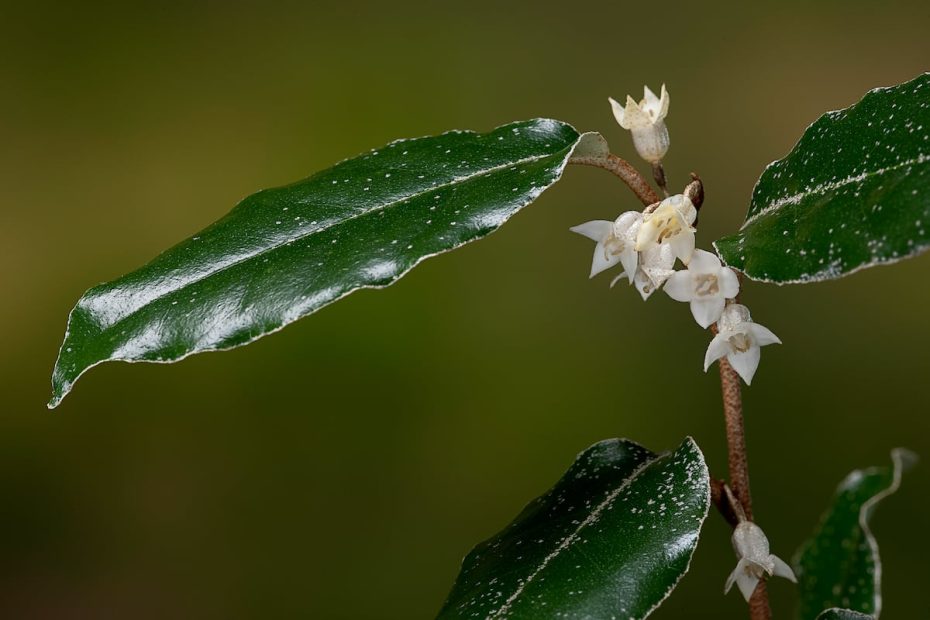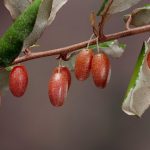
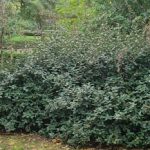

“Where does that aroma come from?” two women ask themselves on their morning walk through the park, while they curiously inquire around a sanded path. A soft, sweet fragrance floats in the air that caresses the pituitary lovingly. A look around shows no obvious flowers that could produce that perfume. And a new look, this time more calm, still does not detect the origin of the mystery. “Could it have been that couple that was running in front of us?” one asks her friend with some impatience. No, impossible, the smell remains there, as if the source of the essence were close, very close to them. Such are certain flowers, which have no desire for any possible protagonism, for which their only calling card is the emotion they awaken among those who smell them.
Intrigued, the two women continue their walk without having cleared up their olfactory doubts. But several eleagno bushes they smile in their wake: they have cautiously and incognito fallen in love again with two people who leave with their lungs full of the alchemy that their corollas give off. The reason why its flowering is not discovered so quickly is due to the small size of its whitish flowers, a fact increased because they remain half-hidden by their own silver-colored leaves and branches.
These eleagno bushes (Elaeagnus × submacrophylla) can be found in a thousand and one parks throughout Spain, from north to south, and from east to west. The cross in the middle of its scientific name indicates that it is a hybrid, a mixture between two species: Elaeagnus pungens and Elaeagnus macrophylla, both originating from East Asia. All of these plants are relatives of the paradise tree or panjino (Elaeagnus angustifolia), spread throughout many regions of the country thanks to its resistance to drought, the scorching sun and impoverished lands.
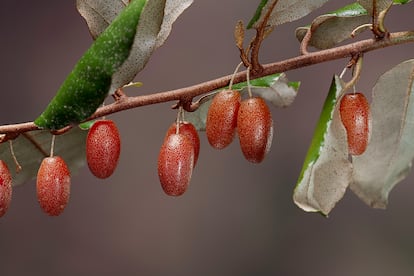
The eleagno is not a peacock that dazzles with its colors, but it is a lark that captivates for several reasons. One, the aforementioned fragrance of its flowering that, precisely, occurs in these weeks, sliding with the autumn breeze. Another of its strong points is its color: the young and adult leaves are covered on the upper and lower sides with silver scales that give them a glaucous, silvery tone. This layer works as a protector against the inclemencies that the plant may suffer, such as excess sun – something that is increased by the hardness of its epidermis. Old leaves usually lose this coating and look naked and green, but with a beautiful shiny varnish. Of course, all the leaves are a good size, which, together with their tones, generates very interesting contrasts with other shrubs.
The eleagno must be considered a large shrub, since, if left to vegetate freely, it grows to a height of four meters – a size that also reaches in width. The way in which this dough is obtained is very curious. Every year it emits very vigorous branches, like the antennas of an old television, which give it an ungainly appearance. If you leave those branches that, due to their vigor, look like suckers, they will soon end up lying down due to their weight and lack of hardness. Then, when the branches remain prostrate, their secondary buds are activated, which increases the diameter of the plant widthwise. Therefore, it is advisable to choose a large site to plant these shrubs so that they can develop their full volumetric potential. When this occurs, the intricate and impregnable nature of its branches make it very appropriate for nesting birds.
However, the eleagno cannot only be raised in large spaces, since there are garden cultivars that have less development, such as Elaeagnus × submacrophylla ‘Compact’. This acquires a definitive size of around one meter in width and the same height and is a reduced version of the type species.
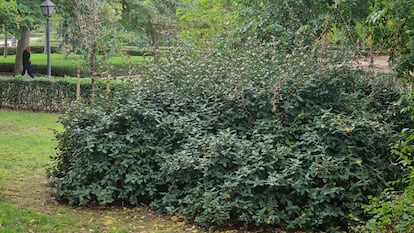
Another widely planted cultivar in Spain is Elaeagnus × submacrophylla ‘Limelight’, a classic for the color of its leaves: with a yellowish and light green central spot, and a dark green discontinuous edge. These tones, applied in brush strokes over the entire surface, are the reason why no two identical leaves are found on the same plant. This variegated eleagno, because it has more than one color on the same leaf, is practically as vigorous as the already seen silver-leaf eleagno.
To conclude this short review of this very interesting plant, we cannot forget that all bushy eleagnos resist pruning very well, which is why they are appropriate for forming them into topiaries, with geometric volumes. Of course, it must be taken into account that, due to their large blades, the cuts on them will be quite visible if they are made with a machine or hedge shears. It should also be taken into account that if it is cut back, it will have less flowering and subsequent fruiting.
Having an edible fruit is a common characteristic of several species of Elaeagnus. However, to taste it, you have to make sure that it is soft, a sign of its maturity. Normally, it will be the birds that will first notice them, in the middle of spring.
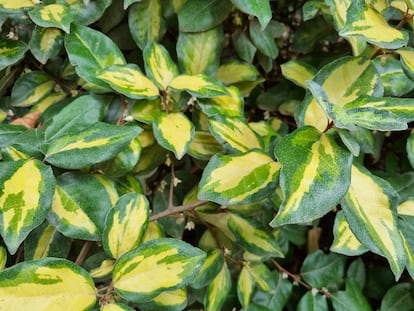
An ace up its sleeve, or underground, that the eleagno keeps has to do with the reason for its vigorous growth: although it is pruned every few months, it sprouts again fiercely and quickly. The secret lies in its roots: symbiotically associated with actinobacteria, which fix atmospheric nitrogen to transfer it to the plant, they have a large amount of this macroelement to form more aerial mass. This explains its good growth rate even in poor and arid soils. Its resistance can also be extrapolated to its resistance to both sun and shade, heat and cold. In any case, where the eleagno is happy is in slightly humid but well-drained soil and in full sun, a place where it will show all its splendor. But it is also perfect for growing on the edge of the park, under the trees, with shade interspersed with rays of sun.
As can be seen, it is a very easy plant to grow, even in forgotten land. But, of course, its autumn fragrance will remind us of its presence even if we don’t see where it is.
